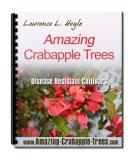Successful composting methods: Take a look!
When it comes to defining how to compost, it's
really difficult but yes there are a wide variety of composting methods
available for you. One needs to take into account that these routines have
different sets of requirements with regard to maintenance, size
specifications, advantages and drawbacks. For successful composting, you
need to select the right kind of composting method on the basis of the space
you possess and more importantly how fast you require the finished compost.
Hot Composting
Hot
composting methods, it develop finished compost in a matter of thirty to
ninety days after beginning the bin. For more effective results, it is
quite important that hot compost piles should be over 3.5 cubic feet to
make sure that the pile temperature is in the vicinity of 100 and 160
degrees Fahrenheit.
You may ask at this point of time: What
is the role of high temperatures? It is worthwhile mentioning that high
temperatures play a pivotal role in killing pathogens, weed seed and
plant diseases. It is always a good thing to combine or alternate
nitrogen layers and carbon materials. This will give rise to a more
comprehensive and fast composting.
Nitrogen includes vegetable scraps,
fresh lawn clippings and coffee grinds. On the other hand, carbon
materials consist of cardboard, dried grasses, sawdust and leaves. It is
of paramount importance that you combine or turn the complete pile or
bin every week. To keep the bin or pile moist, you need to add water.
Cold Composting
Cold
composting is the method to use if there is no urgent requirement for
the finished compost. The best part about cold composting is that there
is not much you need to do in terms of maintenance. As a matter of fact,
you just need to add vegetable scraps, fruit, dead garden plants, dried
grass and few organic products and nature will do the rest for you.
Cold composting may not be quite as
effective in killing dangerous organisms and weed seeds but it does play
a prominent part in suppressing soil-borne diseases. You need to keep
in mind that dealing with temperatures of higher proportion at the time
of hot composting have an ability to get rid of the beneficial bacteria,
which is generally given a task of suppressing such sort of diseases.
Before you add materials to the bin, it is recommended that you chop
them first. When you are all set to use the compost, filtering of
un-decomposed material may be required and you can implement it through a
screen.
Vermicomposting
The apartment dwellers and those who are
restricted to indoor composting prefer Vermicomposting methods. One of
the most important features of these methods is that earth worms quicken
up the compost time. Worms play a very significant role by eating
organic waste like fruit scraps and vegetable and also moving the
materials with the help of their digestive tracks, developing nutrient
rich castings. Make sure that you select a composting container of
around 2 cubic feet, adding shredded newspaper for the worms bedding. In
addition, also add vegetable scraps and fruit occasionally. Harvest
finished compost in around 90 days later, when worms are ready to turn
food scraps and bedding into compost.
Considerations
Irrespective
of whatever composting method you go for, make sure that you never add
dairy products and meat to your bin. This is because of the fact that
dairy products and meat have an ability to attract insects to compost
piles, causing insect related issues in garden beds. You are going to
find the effects of it in the finished compost, which basically takes
the shape of a soil amendment, topsoil or growing medium. When you opt
for vermicomposting, there is a strong possibility that the worms may
not like dairy products and meat, leaving those materials and give rise
to foul odors, which can be quite annoying if composting indoors.
It is your responsibility to ensure that
the compost bin stays away from direct sunlight. Another important
thing that you need to be careful of is that there is a need to have a
consistent level of light whether in a closet or under a sink. There is
no point putting in food items like fish, chips and any citrus fruits
such as lemons and oranges.
Have A Great Story About This Topic?
Do you have a great story about this? Share it!
Order Your New Landscape Design Today!
Always Design Before You Plant!
Click The Above Link To Get Your Dream Design Started Now!

Privacy Disclaimer About Contact This Site Built: Solo Build It
Copyright © 2003 - 2023 by Web-Landscape-Design-Ideas.com.
All rights reserved.


